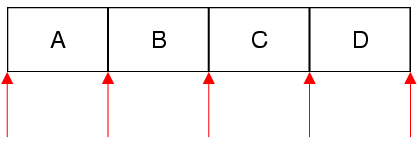QSetIterator 类提供 Java 样式常量迭代器为 QSet . 更多...
| 头: | #include <QSetIterator> |
| CMake: |
find_package(Qt6 COMPONENTS Core REQUIRED)
target_link_libraries(mytarget PRIVATE Qt6::Core) |
| qmake: | QT += core |
| QSetIterator (const QSet<T> & set ) | |
| QSetIterator<T> & | operator= (const QSet<T> & container ) |
| bool | findNext (const T & value ) |
| bool | findPrevious (const T & value ) |
| bool | hasNext () const |
| bool | hasPrevious () const |
| const T & | next () |
| const T & | peekNext () const |
| const T & | peekPrevious () const |
| const T & | previous () |
| void | toBack () |
| void | toFront () |
QSet 同时拥有 Java 风格迭代器 and STL 样式迭代器 。STL 样式迭代器效率更高且应首选。
QSetIterator<T> allows you to iterate over a QSet <T>. If you want to modify the set as you iterate over it, use QMutableSetIterator <T> 代替。
构造函数接受 QSet as argument. After construction, the iterator is located at the very beginning of the set (before the first item). Here's how to iterate over all the elements sequentially:
QSet<QString> set; ... QSetIterator<QString> i(set); while (i.hasNext()) qDebug() << i.next();
next () function returns the next item in the set and advances the iterator. Unlike STL-style iterators, Java-style iterators point between items rather than directly at items. The first call to next () advances the iterator to the position between the first and second item, and returns the first item; the second call to next () advances the iterator to the position between the second and third item, returning the second item; and so on.

Here's how to iterate over the elements in reverse order:
QSetIterator<QString> i(set); i.toBack(); while (i.hasPrevious()) qDebug() << i.previous();
If you want to find all occurrences of a particular value, use findNext () 或 findPrevious () in a loop.
Multiple iterators can be used on the same set. If the set is modified while a QSetIterator is active, the QSetIterator will continue iterating over the original set, ignoring the modified copy.
另请参阅 QMutableSetIterator and QSet::const_iterator .
搜索
value
starting from the current iterator position backward. Returns
true
if
value
is found; otherwise returns false.
After the call, if value was found, the iterator is positioned just before the matching item; otherwise, the iterator is positioned at the front of the container.
另请参阅 findNext ().
搜索
value
starting from the current iterator position forward. Returns
true
if
value
is found; otherwise returns
false
.
After the call, if value was found, the iterator is positioned just after the matching item; otherwise, the iterator is positioned at the back of the container.
另请参阅 findPrevious ().
Returns the previous item without moving the iterator.
Calling this function on an iterator located at the front of the container leads to undefined results.
另请参阅 hasPrevious (), previous (),和 peekNext ().
Returns the previous item and moves the iterator back by one position.
Calling this function on an iterator located at the front of the container leads to undefined results.
另请参阅 hasPrevious (), peekPrevious (),和 next ().
返回
true
if there is at least one item behind the iterator, i.e. the iterator is
not
at the front of the container; otherwise returns
false
.
另请参阅 hasNext () 和 previous ().
Returns the next item without moving the iterator.
Calling this function on an iterator located at the back of the container leads to undefined results.
另请参阅 hasNext (), next (),和 peekPrevious ().
Returns the next item and advances the iterator by one position.
Calling this function on an iterator located at the back of the container leads to undefined results.
另请参阅 hasNext (), peekNext (),和 previous ().
返回
true
if there is at least one item ahead of the iterator, i.e. the iterator is
not
at the back of the container; otherwise returns
false
.
另请参阅 hasPrevious () 和 next ().
Moves the iterator to the back of the container (after the last item).
另请参阅 toFront () 和 previous ().
Moves the iterator to the front of the container (before the first item).
Makes the iterator operate on set . The iterator is set to be at the front of the set (before the first item).
构造迭代器为遍历 set . The iterator is set to be at the front of the set (before the first item).
另请参阅 operator= ().